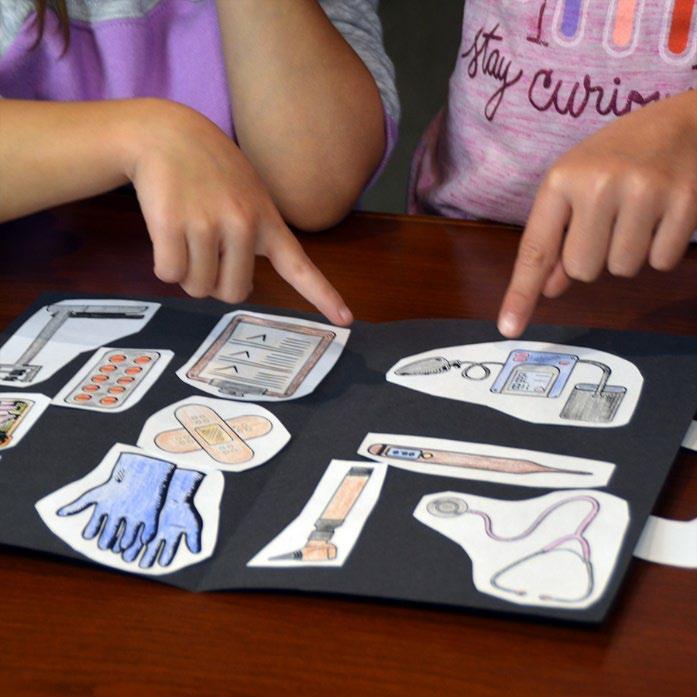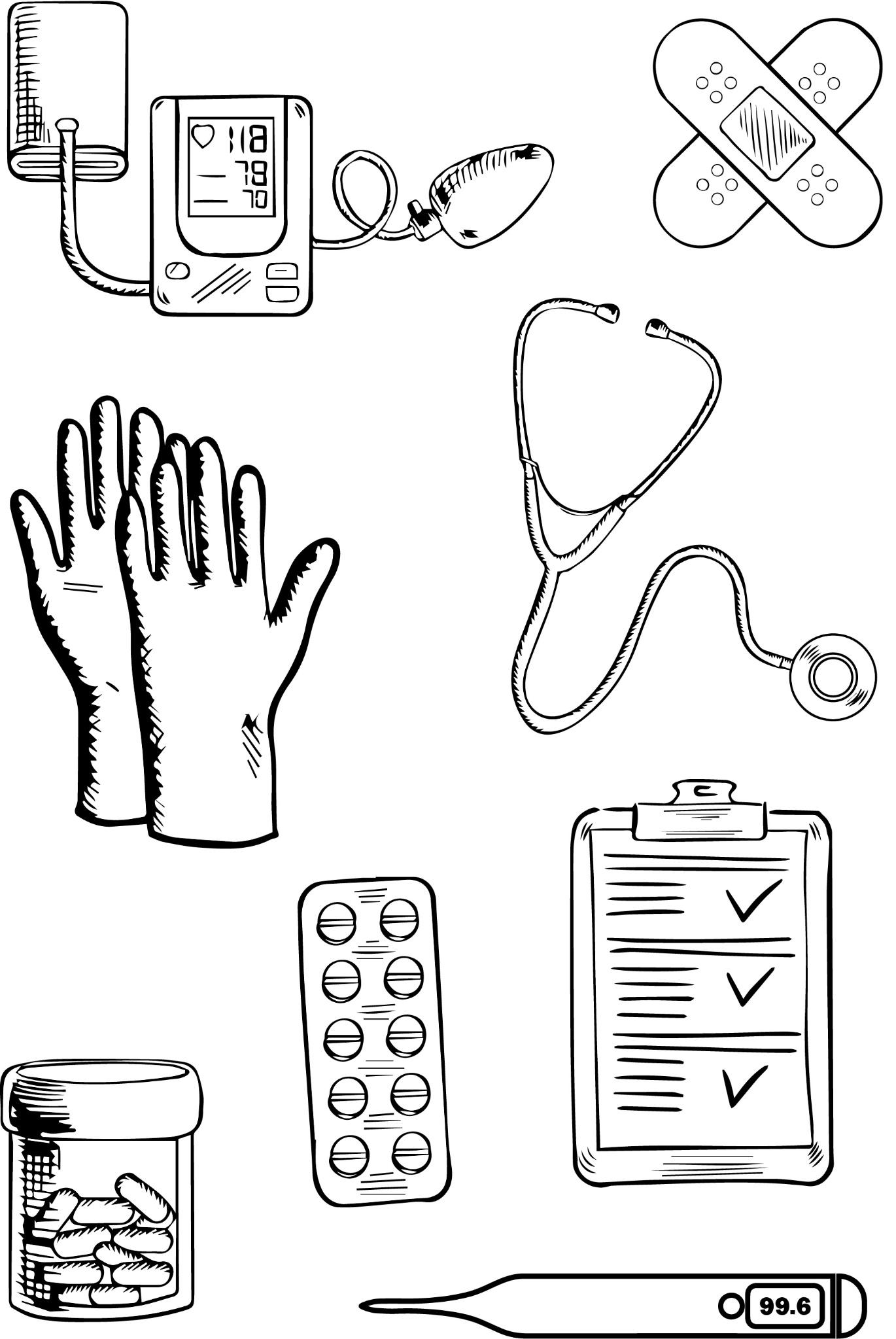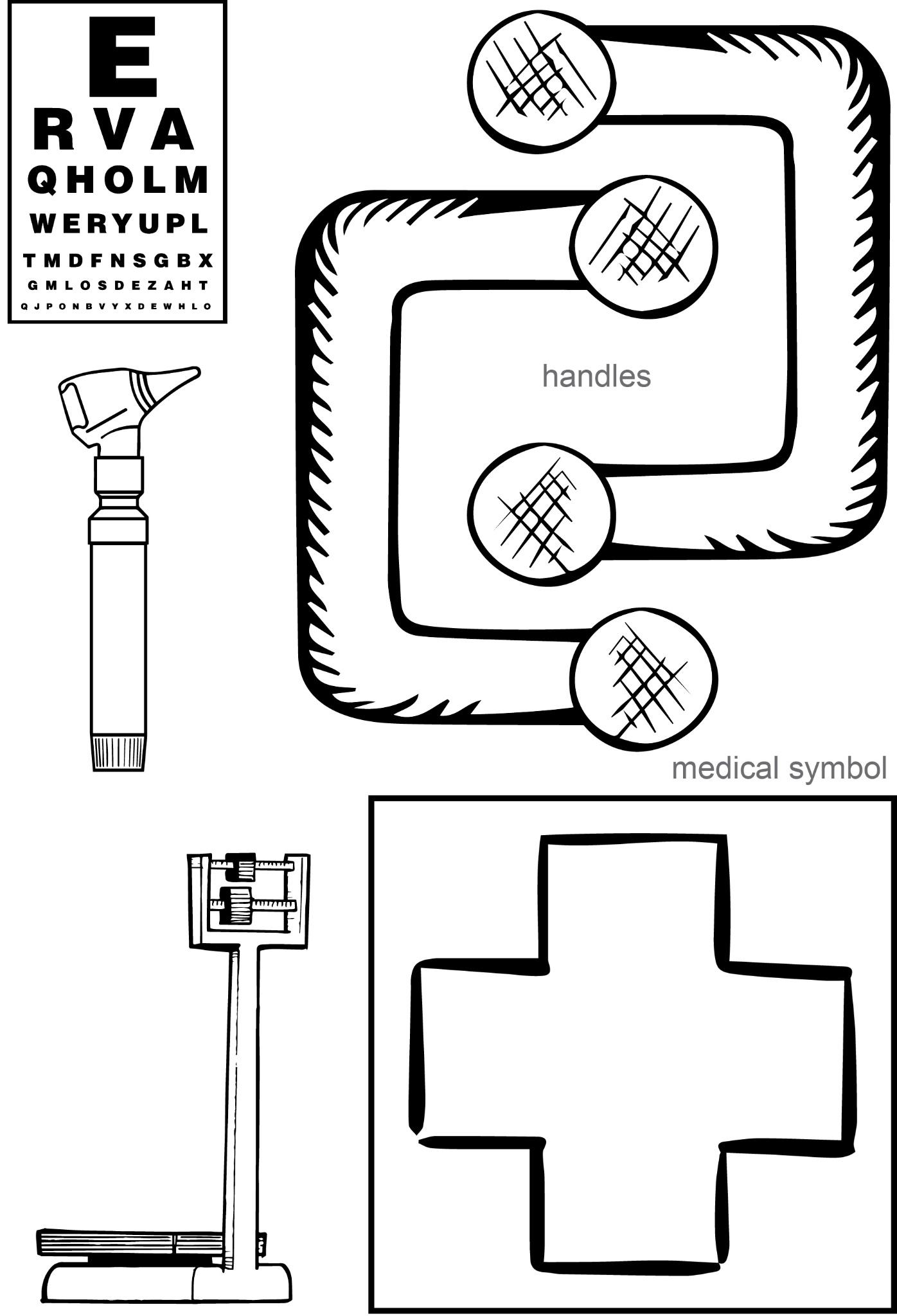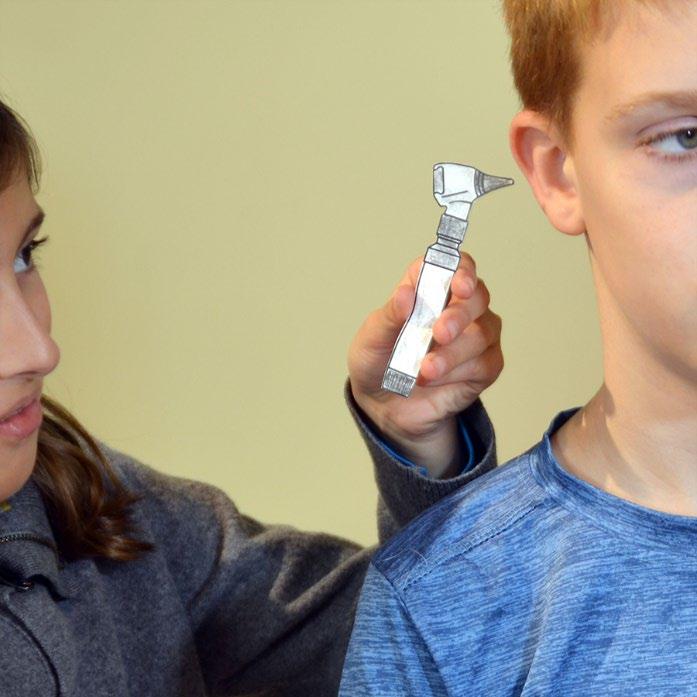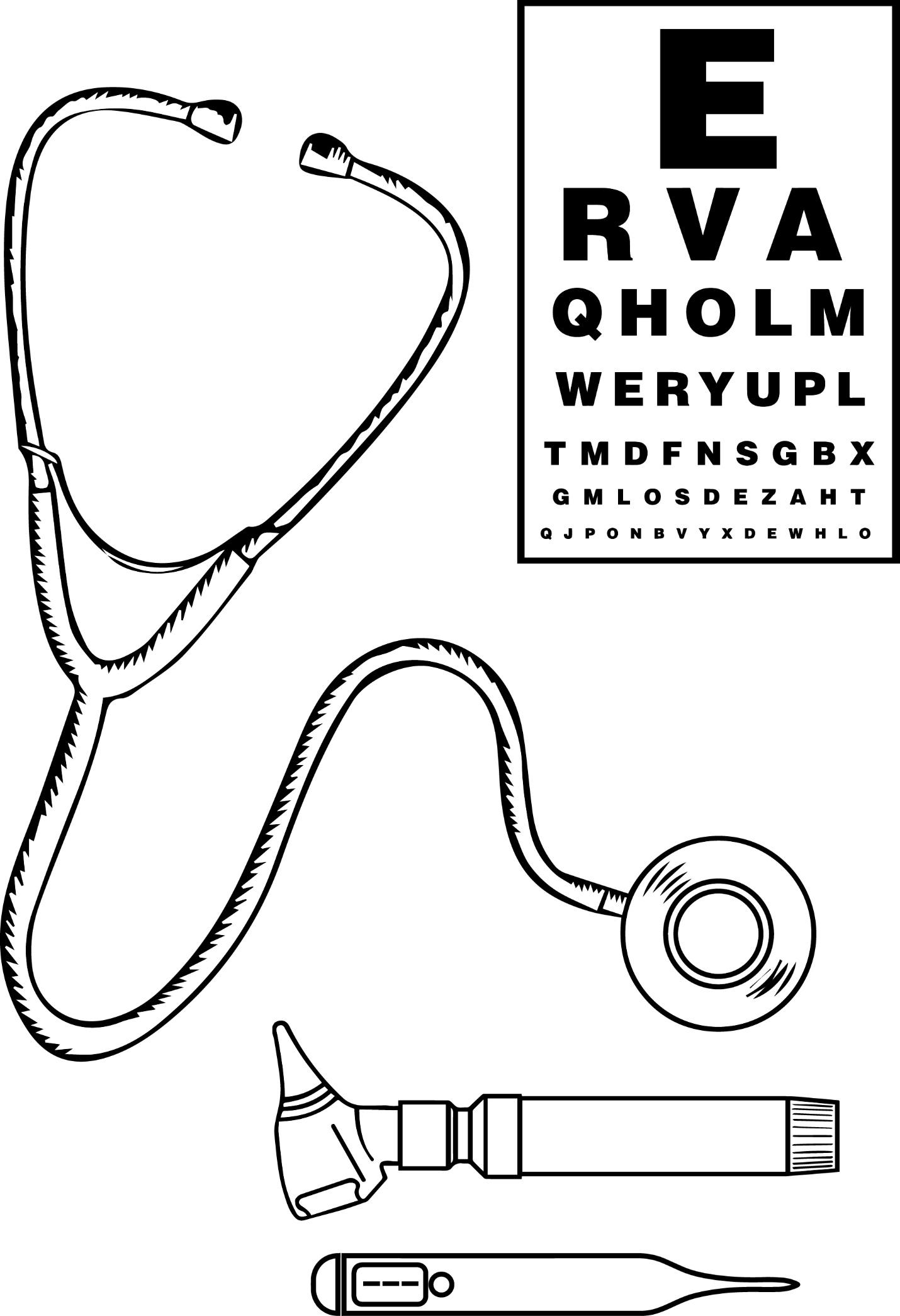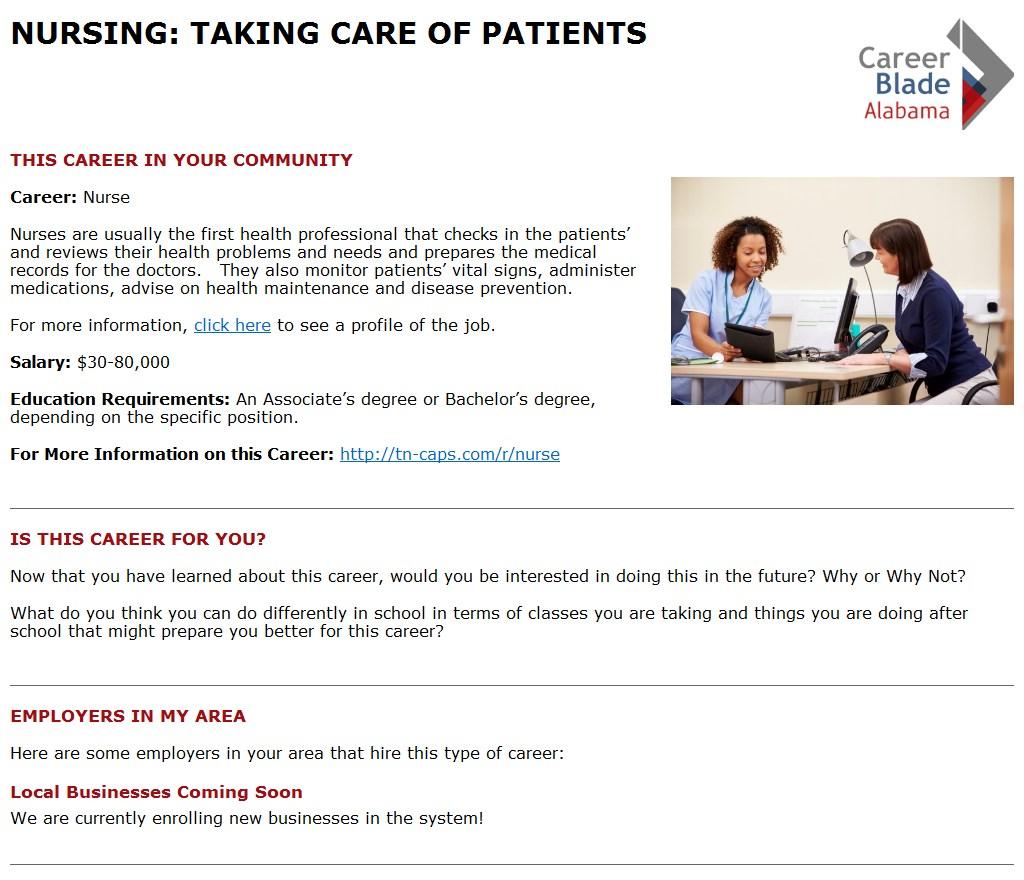NURSING: TAKING CARE OF PATIENTS



LESSON PLAN OVERVIEW
Career: Nurses assess patient health problems and needs, develop and implement care plans and maintain medical records. They also monitor patients’ vital signs, administer medications, advise on health maintenance and disease prevention. Nursing careers include: Licensed Practical Nurses (LPN), Licensed Vocational Nurses (LVN), and Registered Nurses (RN).
This lesson plan highlights some of the items that nurses use in their careers and some of the questions and things they need to review as they are seeing patients.
Grade Level: Elementary Grades
Learning Objectives:
〉 Students will explore the nursing career and how nurses care for patients.
〉 Students will create a n urse’s kit to explore the tools nurses use to provide basic care to patients.
〉 Students will role-play being a nurse by examining patients and completing a patient information form.
〉 Students will gain a basic insight into the nursing profession, including common job tasks and tools nurses use to perform those tasks.
Materials Needed:

Activity #1: Creating a Nurse’s Kit
〉 Student worksheet
〉 Crayons, colored pencils, or markers
〉 Scissors, glue, tape
〉 Construction paper
〉 Optional miscellaneous medical supplies –cotton balls, popsicle sticks (tongue depressor), Band-Aids, gauze, etc.
Activity #2: Examining Patients
〉 Wall height chart (You can have students make a height chart as a group activity or use a yard stick or tape measure.)
〉 Eye chart
〉 Weight scale (teacher discretion)
〉 Stethoscope (If you can provide one, even a toy, pass it around for students to use.)

TEACHER GUIDE
Lesson Instructions: This lesson plan will help you demonstrate to students common skills and procedures used in the nursing profession. Begin the lesson by reading the Class Message below to your students, then have them watch the recommended Video Introduction. Afterwards, facilitate discussion with the Class Questions listed.
After the discussion, students will work on the included activities. Each activity has a printable worksheet with student instructions and areas to record their work. Provide guidance to students on how to use their worksheets before beginning each activity.
You should also familiarize yourself with the student worksheets to help demonstrate any procedures and help facilitate the ending activity discussion.


Class Message: Today we are going to explore the nursing career. We will learn about some of the things nurses do to take care of their patients
A nurse provides care for people who may be sick, in the hospital, or who just go to the doctor’s office for a check-up. Nurses gather information on patients by taking their temperature, their pulse rate, or listening to their heartbeat. This helps the nurse to find out if the patient might be sick. Nurses write this information on the patient’s chart to share with the doctor.
Let’s watch this video to learn more about what nurses do.

(http://tn-caps.com/r/K2VNR)


Class Discussion Questions:
〉 Think about your last visit to a doctor’s office. Did you see a nurse?
〉 What did the nurse do for you? Did the nurse take your temperature or pulse? What else did the nurse do?
〉 Were there other people in the doctor’s office besides the nurse that did something for you?
〉 Did the nurse write down information about you on a chart?
Activities Overview: This lesson plan includes two student activities. Activity #1 will help students recognize and understand the tools a nurse uses to perform basic medical care by creating a nursing kit. Activity #2 enables students to better understand the duties of a nurse by examining patients and completing a patient information form.
Read and familiarize yourself with the student worksheet for each activity.

Activity #1: Creating a Nurse’s Kit
This activity enables students to individually create their own nurse’s kit and learn the different tools a nurse uses when providing basic patient care.
Activity Instructions:
〉 Handout the student worksheet.
〉 Review the worksheet and read the activity Introduction and Description to the students.
〉 Facilitate the activity, helping students construct a nurse’s kit where they will color, cutout and paste the tools included in the worksheet onto a construction paper nurse’s kit.
〉 When finished, facilitate the discussion questions for this activity.


Activity Results: Students should have constructed a nurse’s kit that, when unfolded, shows common nurse’s tools.
Activity #2: Examining Patients
Activity Instructions:
This activity enables students to better understand the duties of a nurse by examining patients and completing a patient information form.
〉 Handout the student worksheet.
〉 Have students wash their hands using the handwashing process described in the worksheet.
〉 Read the activity Introduction and Description sections to the students.
〉 Assign students into groups or pairs.
〉 Review the worksheet with students and help students understand the items on the patient information form.
〉 Help students take the vital measurements and record them on the form.
〉 After completion, facilitate the discussion questions for this activity.
Activity Results: Students will use the patient information form to examine the patient and select the results of the examination. Each student will take a turn playing the nurse and playing the patient


CAREER INSIGHT
Career Highlight: This lesson plan highlights some of the skills a nurse uses on a daily basis to care for patients. See the Employers in My Area section to contact businesses and organizations in your area about classroom demonstrations, on-site visits, or other additional career exposure opportunities.
Featured Career:
LPN/LVN and Registered Nurse (RN)
Career Descriptions: LPN/LVN and Registered Nurses (RNs) provide and coordinate patient care, educate patients and the public about various health conditions, and provide advice and emotional support to patients and their family members.
Nurses typically do the following:
〉 Assess patients’ conditions

〉 Record patients’ medical histories and symptoms
〉 Observe patients and record the observations
〉 Administer patients’ medicines and treatments
〉 Set up plans for patients’ care or contribute information to existing plans
〉 Consult and collaborate with doctors and other healthcare professionals
〉 Operate and monitor medical equipment
〉 Help perform diagnostic tests and analyze the results
〉 Teach patients and their families how to manage illnesses or injuries
〉 Explain what to do at home after treatment
Most Nurses work as part of a team with physicians and other healthcare specialists. Some Registered nurses oversee Licensed Practical Nurses (LPN) and Licensed Vocational Nurses (LVN), nursing assistants, and home health aides.
Other Names for this Career: Licensed Practical Nurse (LPN), Licensed Vocational Nurse, Registered Nurse (RN), Emergency Department RN, Staff Nurse, Oncology RN, Staff RN, Director of Nursing (DON), School Nurse, Clinic Nurse, Public Health Nurse (PHN), Charge Nurse, Operating Room RN





